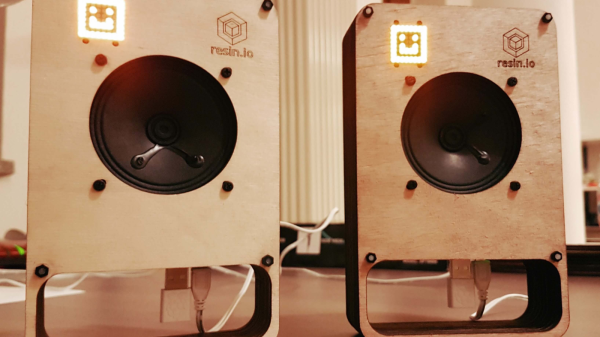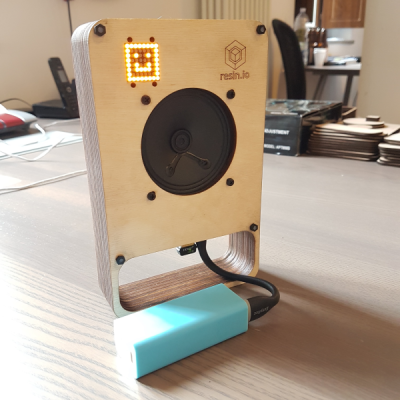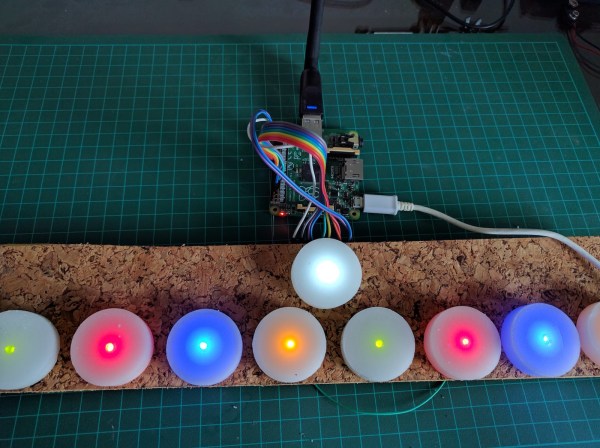Here’s a retro-electronic rehab with a twist. Normally we’d expect a jukebox Raspberry Pi project to replace the obsolete electromechanical guts with streamed music, but an intact jukebox with a Raspberry Pi remote control is a nice change.
Old-time jukes like [revnhoj]’s 1954 AMI F120 are electromechanical marvels. Stocked with 60 45-rpm discs in a horizontal rack, an arm mounted on a track would retrieve the correct disc and place it on the turntable to play the selected song. The unit in the video below was the main jukebox, which supported “wall boxes” mounted at booths so patrons could select tunes without leaving their tables. [revnhoj] simulated a wall box with a Raspberry Pi connected to the original wall box interface through relays. The Pi serves up a GUI that can be accessed via a tablet, the correct contacts are tickled, and [revnhoj]’s collection of 45s is played through the original mechanism and amplifier, in all its “Sonoramic Sound” majesty. It’s a pretty neat hack that adds new functionality while being true to the original platform.
The chatter on the reddit thread where we spotted this hack was trending toward adding streaming audio, but we truly hope the juke stays intact and serving only vinyl. We’ve seen jukeboxes gutted before, and while it might make sense for some, we like the old school approach better.
Continue reading “Jukebox Gets Raspberry Pi Update, But It’s Not For Streaming”






 The hardware is simple. There’s the Raspberry-Pi — he’s got instructions on making it work with the Pi2, Pi2+, Pi3 or the Pi0. Since the Pi’s have limited audio capabilities, he’s using a DAC, the
The hardware is simple. There’s the Raspberry-Pi — he’s got instructions on making it work with the Pi2, Pi2+, Pi3 or the Pi0. Since the Pi’s have limited audio capabilities, he’s using a DAC, the 










